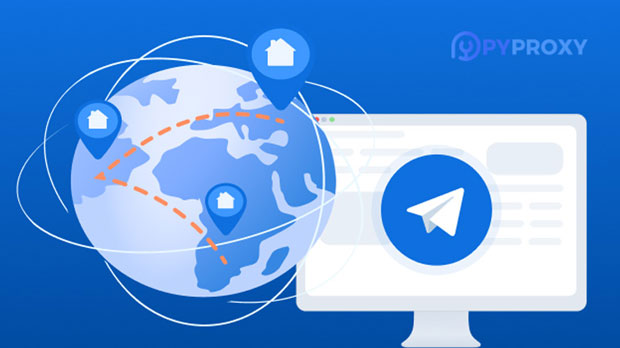In the digital age, many users turn to proxies to maintain privacy and access geo-restricted content. socks5 proxies, which are particularly popular due to their versatility and support for various protocols, have become a common choice. For Windows 10 users, the decision between free and paid SOCKS5 proxies is crucial, as both options offer distinct benefits and drawbacks. While free proxies may seem appealing due to the lack of monetary investment, paid proxies generally provide more stability, better speed, and enhanced security. This article explores the key differences between free and paid SOCKS5 proxies for Windows 10 users, delving into their performance, security, and usability. 1. Overview of SOCKS5 ProxiesSOCKS5 is a version of the SOCKS (Socket Secure) protocol, known for its ability to handle any type of internet traffic, including HTTP, HTTPS, FTP, and more. Unlike traditional HTTP proxies, SOCKS5 proxies operate at a lower level in the network stack, making them more flexible and adaptable for various types of internet applications. Windows 10, being a popular operating system, supports SOCKS5 proxies natively, allowing users to configure them easily for enhanced browsing experiences.2. Key Differences Between Free and Paid SOCKS5 ProxiesThe main difference between free and paid SOCKS5 proxies lies in the service quality, including factors such as speed, reliability, and security. While free proxies may seem like an attractive option, they come with several limitations that users need to consider.2.1. Performance and SpeedSpeed is one of the most significant factors that differentiate free and paid SOCKS5 proxies. Free proxies typically have lower bandwidth and can be overcrowded, leading to slower connection speeds. This is especially evident when multiple users are accessing the same server simultaneously, as it can lead to network congestion and latency issues. As a result, users may experience buffering when streaming content, slower load times for websites, or delays in online gaming.In contrast, paid SOCKS5 proxies offer higher bandwidth and dedicated resources. Providers often maintain a lower number of users per server to ensure better performance. This translates into faster and more stable connections, with minimal latency, making paid proxies a better choice for activities that demand high-speed internet access, such as streaming HD video or gaming.2.2. Security and PrivacyWhen it comes to security, free SOCKS5 proxies are generally less reliable than paid ones. Free proxy servers are often operated by unknown or anonymous entities, and there is no guarantee that they are secure. In many cases, free proxies may log your browsing activity or even inject malicious ads into your web traffic. This compromises your privacy and exposes you to potential security risks, including data breaches and malware infections.Paid proxies, on the other hand, typically come with robust security features. Many paid providers offer encryption to secure your data transmission and ensure that your browsing activities remain private. Additionally, reputable paid SOCKS5 providers often have strict no-logging policies, meaning they do not track or store your online activities. This added layer of privacy protection is crucial for users who are concerned about their data being exposed or used maliciously.2.3. Reliability and DowntimeReliability is another area where paid SOCKS5 proxies stand out. Free proxies often experience frequent downtimes or unstable connections, leaving users unable to access the internet or their desired content. Since free proxies are usually offered by individuals or small entities, there is no guarantee of uptime, and these servers are often shut down without prior notice.Paid proxies, however, are maintained by professional providers who ensure a high level of reliability. They typically offer service-level agreements (SLAs) that guarantee a certain amount of uptime and provide customer support to resolve any issues quickly. As a result, users of paid SOCKS5 proxies can expect a more stable and consistent connection with fewer disruptions.2.4. Customization and Additional FeaturesFree SOCKS5 proxies often lack customization options, making it difficult for users to adjust the settings to suit their specific needs. They may also lack advanced features like IP rotation, which helps maintain anonymity by changing the user's IP address periodically. Furthermore, free proxies may not support high-level configurations, such as tunneling or bypassing certain types of internet filters.Paid SOCKS5 proxies, however, usually offer a wider range of features and customization options. Users can often choose between different server locations, enabling them to access geo-restricted content. They may also benefit from advanced settings that optimize their internet experience, such as increased anonymity and IP rotation to prevent tracking. This flexibility makes paid proxies a better option for users who require a more tailored browsing experience.3. Cost ConsiderationsWhile free SOCKS5 proxies do not require any financial commitment, they come with various limitations in terms of performance, security, and reliability. The cost of a paid socks5 proxy can vary depending on the provider, but it typically offers better value in the long run for users who prioritize performance, privacy, and support.Users should carefully weigh the cost of a paid SOCKS5 proxy against the potential benefits. In many cases, the small monthly or yearly subscription fee may be justified by the improved speeds, security, and reliability that paid proxies offer. For those who rely on internet access for work, entertainment, or online gaming, the investment in a paid proxy can be a worthwhile expense.4. ConclusionIn conclusion, while free SOCKS5 proxies may be appealing for casual users who do not require high-speed connections or enhanced privacy, they are often inadequate for those who need a more reliable and secure internet experience. Paid SOCKS5 proxies, although they come with a cost, offer superior performance, better security, and a more reliable connection. For Windows 10 users who prioritize privacy, speed, and stability, investing in a paid SOCKS5 proxy is likely the better option.
Jan 15, 2025
![arrow]()



















































